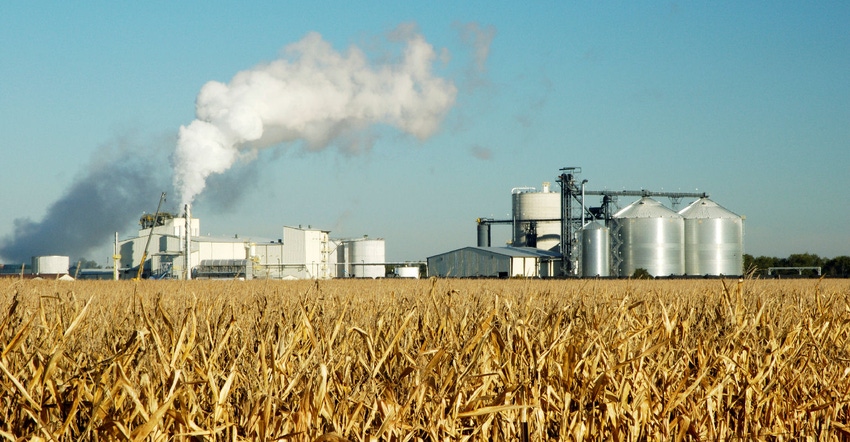Natural yeast-derived proteins may reduce use of antibiotics in ethanol fermentation process.
October 31, 2018

In corn and sugarcane ethanol production, bacterial contamination during the fermentation process can result in a significant loss in yield and, consequently, revenue for producers.
A common culprit of contamination is bacterial members of the Lactobacillaceae family, also known as lactic acid bacteria, which tend to thrive under ethanol fermentation, according to an announcement from the University of Illinois.
Once these bacteria make their way into the ethanol fermentation mash, they begin eating the sugars and producing lactic acid, effectively putting a halt to the fermentation process, and without fermentation, no ethanol can be produced.
Although the ethanol industry already uses some methods of dealing with contamination, such as antibiotics, researchers at the University of Illinois wondered if they could improve the battle over lactic acid bacteria by having yeast produce a natural protein to fight the contamination.
Having an alternative to antibiotics in ethanol production would also reduce questions concerning antimicrobial residues in the resulting feed co-products, such as dried distillers grains.
The Illinois researchers first needed to engineer a yeast that could produce the proteins and attack the bacteria from within. Findings published in the journal Viruses showed that these proteins, known as endolysins, were successful in helping to improve ethanol productivity and yields.
“What’s important is that these endolysins, these proteins, can effectively kill these bacteria in a very specific and handy way,” said Michael Miller, associate professor of food microbiology in the University of Illinois department of food science and human nutrition (FSHN) and co-author of the paper. “It’s also very easy or at least conceivable to engineer the fermenting yeast to make the proteins for us, which potentially makes addressing the bacterial contamination a lot cheaper.
“That was another big contribution of this paper in that we were able to successfully get yeast to make and secrete endolysins and make it be antimicrobial in the fermentation broth,” he added.
Yong-Su Jin, FSHN professor of food microbiology and co-author of the paper, explained that the protein the researchers chose for their experiment is used by bacteriophage, a type of virus that infects bacteria. “When a bacteriophage infects bacteria, especially like lactic acid bacteria, endolysins are what the bacteriophage uses to burst the host cell,” Jin explained.
Their idea was to bring this protein into the yeast used during ethanol fermentation by engineering the yeast to produce the endolysin. By cloning the LysA2 (endolysin) gene and putting it into Saccharomyces cerevisiae (brewer’s yeast), S. cerevisiae secreted the endolysin protein during an experimental fermentation trial. When lactic bacteria contamination was introduced, the endolysins attacked the bacteria.
“So, we are using this natural system to prevent lactic bacteria contamination. We think this is a good solution to antibiotics usage,” Jin said.
Although endolysins have been added to ethanol fermentation before as a purified enzyme, much like adding antibiotics, Miller said this study is the first to report endolysins being made and secreted by the fermenting yeast.
The yeast-derived proteins were also successful in controlling bacterial contamination during fermentation in glucose (YPD60), a typical rich-growth medium used in lab experiments, and sucrose-based (sugarcane juice) ethanol fermentation.
“We show that endolysins have potential to replace antibiotics as a tool for controlling infections in ethanol fermentations,” Miller said. “We’re not saying we’ve solved it, but this shows that endolysins have potential to do that. If you think about antibiotics, they’re very broad spectrum and kill lots of things. They’re pretty indiscriminate, which is sometimes good but sometimes not what we want.
“In this particular case, these endolysins are much more targeted, so the sweet spot would be if you had ones that were broad enough to kill all or most of the problem bacteria but leave everything else alone. That’s where we want to be for these kinds of applications,” Miller added. “These endolysins have the potential to do something like that.”
Demonstrating that endolysins can be functionally made in the yeast and secreted in the media may have other applications beyond ethanol production, Jin said, explaining, “This shows us that we could use this idea for many other applications. We are talking about things like how to prevent gut infection, specifically Clostridium difficile infection. We could potentially engineer the use of specific endolysins that would attack bad bacteria.”
Co-authors on the paper, “Yeast Derived LysA2 Can Control Bacterial Contamination in Ethanol Fermentation,” include Jun-Seob Kim, M. Angela Daum, Yong Su-Jin and Michael J. Miller. Funding was provided, in part, by a grant from the Energy Biosciences Institute.
You May Also Like


.png?width=300&auto=webp&quality=80&disable=upscale)
